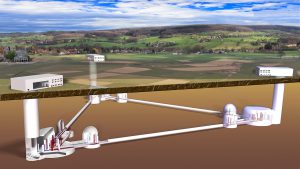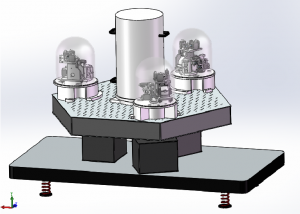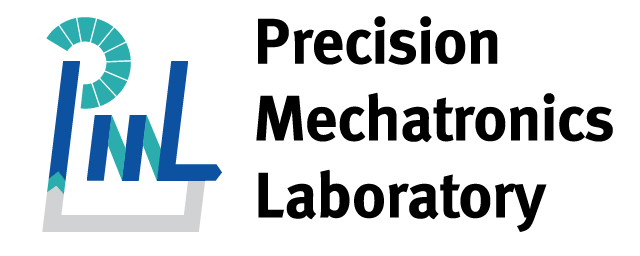With the ever-developing new technologies and high-precision scientific instruments, the performance requirements of vibration isolation are more and more stringent. Gravitational- Wave Detectors (GWDs) are probably some of the most advanced of those high-precision scientific instruments. GWDs are basically kilometer-scale interferometers: devices capable of measuring the relative motion between two mirrors with high accuracy. The best state-of-the-art technologies, from many different domains of engineering, are used to isolate these mirrors from any external disturbances. The only remaining external factor that could cause a relative motion of the test mass is a distortion of space itself.
These ’’ripples’’ in the fabric of space-time, known as Gravitational-Waves (GWs), results from the theory of general relativity proposed by Albert Einstein in 1915. During decades, many instruments have been set up and built in order to detect those GWs. But they have remained undetected because of their extremely low strain level on Earth, estimated to be around 10-21 [1]. To emphasize, this strain would cause two masses placed 1 km apart to show a relative displacement less than the size of a proton [1]. This is only about one hundred years later, in September 2015, that for the very first time in history GWs have been detected by the American 2nd-generation GWD, named advanced LIGO [2].
In addition to LIGO [3] in the US, many other instruments, namely Virgo [4] and GEO600 [5] in EU, have been built all around the world, allowing to detect and study those GWs generated by strong astrophysical events, such as black-hole merging or supernovae. These new waves offer a completely fresh and new view of the universe, providing information that complements those obtained from ‘’traditional’’ telescopes, sensitive to electromagnetic waves. However, their sensitivity is limited to a certain frequency band and amplitude, meaning that many sources of GWs are still being undetected. This is why a 3rd-generation GWD, the Einstein Telescope, is being developed. By extending the detection bandwidth from a few 10’s of Hz, for the current detectors, down to 3 Hz and improving the sensitivity by a factor of 10, the ET telescope is expected to have a detection rate by a factor of 1000 larger than the initial design. In addition, it would allow to detect, and therefore study, GWs coming from different, and still unknown, astronomical events [7].

Figure 1: Aesthetic view of the ET observatory [7].
Reaching the desired sensitivity for the ET is a huge challenge. Among the limitations, seismic vibrations and Newtonian noise are the biggest threats to the sensitivity at low frequencies (1 – 10 Hz) [6]. This is why the SILENT (Seismic IsoLation of EinsteiN Telescope) have been launched. This project aims to develop a platform to isolate GWDs from ground motion [8]. Equipped with inertial sensors, liquid inclinometers and a gravimeter, the table will allow to decouple whatever is put onto it from the Earth, making it virtually float in inertial space [8]. Although this project is closely related to the ET telescope, it is also very applicable to many other fields of engineering.

Figure 2: Prototype of the SILENT platform.
References:
[1] ACCADIA T., et al. The seismic superattenuatores of the VIRGO gravitational waves interferometer. Journal of Low Frequency Noise, Vibration and Active Control, 30(1):63-79, 2011.
[2] ABBOTT B. P., et al. Observation of Gravitational Waves from a Binary Black Hole Merger. Physical review letters vol.116, 061102, 2016.
[3] ABBOT B.P. BP et al. LIGO: the laser interferometer gravitational-wave observatory. Prog.Phys. 72 076901, 2009.
[4] ACCADIA T., SWINKELS B. L. and the VIRGO Collaboration. Commissioning status of the Virgo interferometer. Quantum Grav. 27 084002, 2010.
[5] GROTE , and the LIGO Scientific Collaboration. The GEO 600 status Class. Quantum Grav. 27 084003, 2010.
[6] PUNTURO M., et al. The Einstein Telescope: a thrid-generation gravitational wave observatory. Class Qunatum Grav. 27 194002, 2010.
[7] CERN. CERN’s new einstein observatory to explore black holes, big
[8] Bang. May. 2011. Online, accessed: January 25, 2021.
[9] ULiège. Christophe Collette obtains an ERC Consolidator Grant for his project SILENT. March 2020. Online, accessed: January 25, 2021.



